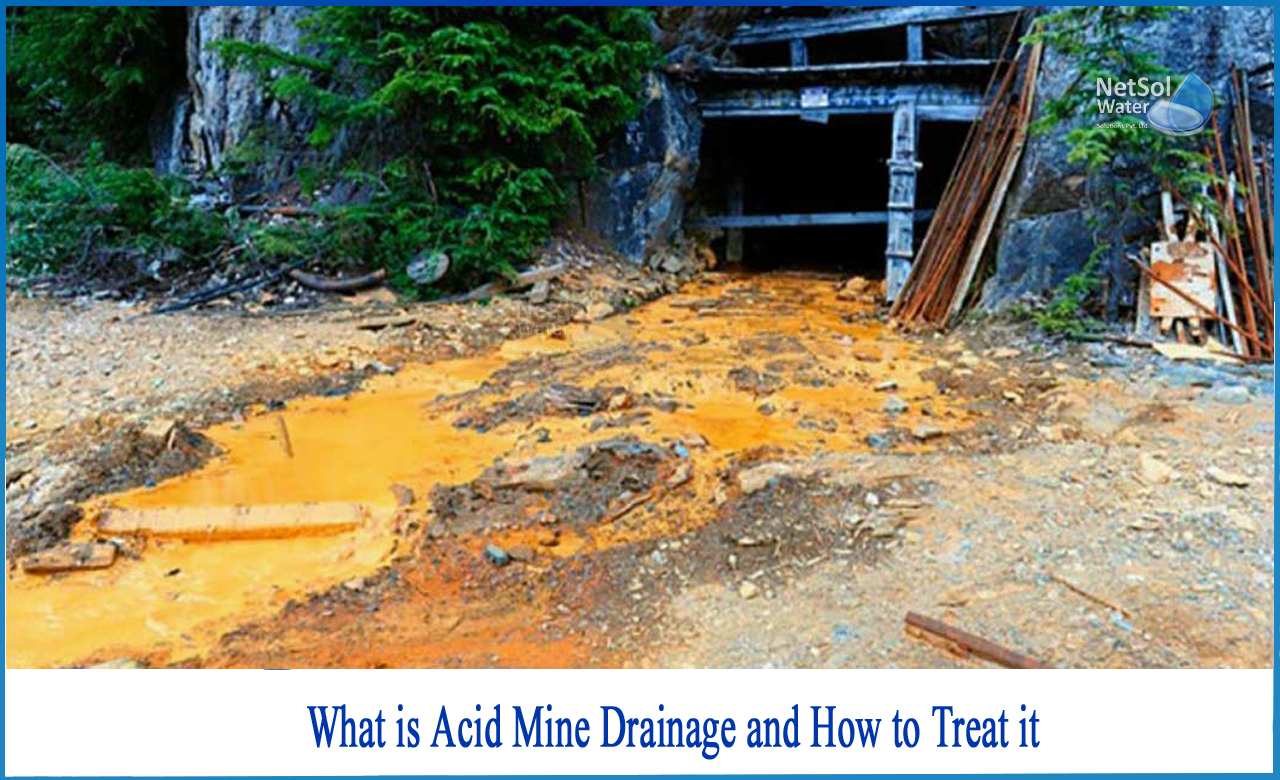What is Acid Mine Drainage?
Acid mine/rock drainage occurs naturally in some environments as a result of the weathering of rocks, but it is further worsened by mining, which typically happens in rocks with a high concentration of sulphide minerals. Sulfuric acid is formed when water comes into contact with sulphur. Sulphuric acid dissolves and leaches the metals in the ore, resulting in high quantities of dissolved metals like iron, arsenic, and cadmium. Water oxidizes when it is exposed to oxygen. When this happens, the water loses all of its oxygen, making it inhospitable for aquatic life. Furthermore, the corrosion and heavy metals in the water render it useless for the fauna that relies on it.
What is the best way to deal with it?
De-carbonation _ the first step in the treatment process
De-carbonation is the first step in the acid mine drainage flowsheet. Chemical usage is often the most expensive part of an acid mine drainage treatment system's operation. As a result, it is vital to optimize chemical usage. When it comes to acid mine water, the waste stream usually contains a lot of CO2.
CO2 is, of course, relatively innocuous on its own. If permitted to remain in the waste stream, however, it will contaminate and consume many of the chemicals required for water treatment further downstream. The removal of CO2 should be the top priority.
Aeration or agitation, which is best performed via a de-aeration/de-carbonation tank, is the greatest technique to minimize CO2. The aerator agitates the water beneath the walkway, while the gear drive and engine are mounted on top.
Treatment Step: Iron-Reaction Aeration
On its journey to the iron-reaction tanks, the flow separates through two troughs as it departs the de-carbonation tank. Off to the side is the sludge densification tank, which is where the essential chemical is introduced. The de-carbonated acid mine drainage slurry is then transported to the iron-reaction tanks, where it interacts with the soluble iron, densifying the slurry. In this stage, oxygen combines with iron to convert it from a ferrous hydroxide (soluble) to a ferric hydroxide (insoluble) (non-soluble). This ferric hydroxide settles much faster, giving the treatment process's first liquid/solids separation phase.
Treatment Step: High-Density Sludge (HDS) Process
The water subsequently exits the iron-reaction tanks and enters the process's heart. The recycling of the thickening underflow via the sludge densification tank, flowing from there back into the iron-reaction tanks, is the sludge densification, or high-density sludge (HDS) process.
Addition of Chemicals
Normally it is recommended to add two chemicals to the stream during an HDS procedure. The first is a polymer that will be added as the water passes from the reaction tanks to the clarifier, and the second is lime, of course.
Treatment Step: Thickening
The thickening stage, which involves settling and removing the non-soluble iron from the liquid, is the next step in the treatment process.The thickener should be between 0.3 and 0.4 GPM per square foot for best results. A variable-frequency drive (VFD) is great for powering the rake arms since it allows you to slow them down as needed.
The bed of a thickening can be unnaturally "light and fluffy" at times, especially when plants don't use the HDS process. If the rake arms are moving too quickly at this moment, the thickening bed might be disturbed to the point where the "fluffy" underflow can become jumbled up and flow over the weirs. It is evident that this is crucial.
Other Types of Mine Drainage
The acidity of mine drainage water isn't always consistent. In the absence of acidic water, the use of lime to settle out the iron is frequently unnecessary. In these circumstances, hydrogen peroxide, as well as a variety of other chemical choices, can often be utilized instead, potentially lowering chemical expenses. The thickening bed will be significantly lighter without the lime (and the heavy calcium it carries) – potentially as low as 5% solids, even if the lime is present.
Netsol Water is Greater Noida-based leading water & wastewater treatment plant manufacturer. We are industry's most demanding company based on client review and work quality. We are known as best commercial RO plant manufacturers, industrial RO plant manufacturer, sewage treatment plant manufacturer, Water Softener Plant Manufacturers and effluent treatment plant manufacturers. Apart from this 24x7 customer support is our USP. Call on +91-9650608473, or write us at enquiry@netsolwater.com for any support, inquiry or product-purchase related query.



